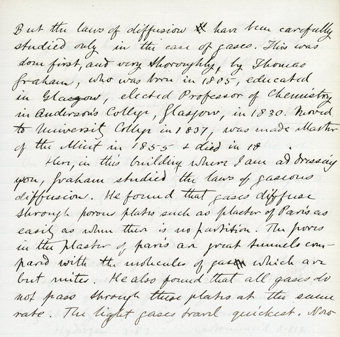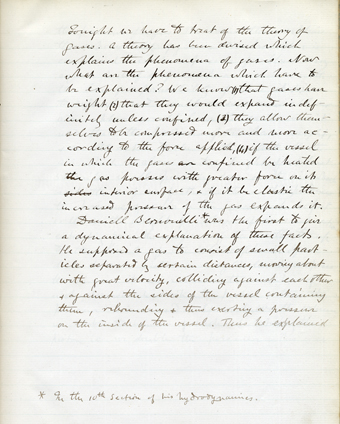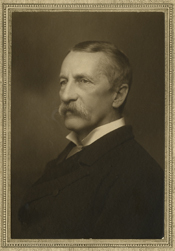This was originally published in January 2012, as part of our Item of the Month series.
This month’s featured item is a set of handwritten lecture notes (ref: OF 1/6) by George Forbes, Professor of Natural Philosophy from 1872 to 1880 at Anderson’s College (the antecedent of the University of Strathclyde).
George Forbes was a distinguished scientist and engineer. Born in Edinburgh in 1849, the younger son of James Forbes (later Principal of St Andrews University), he was educated at Edinburgh Academy and the universities of St Andrews and Cambridge. When still only twenty two, he was appointed Professor of Natural Philosophy at Anderson's University, where he wrote extensively on theoretical and applied physics and collaborated with James ‘Paraffin’ Young on research into the velocity of light. He also took a keen interest in astronomy, leading the British expedition to Hawaii in 1874 to observe the transit of Venus. In his later career, after he left Anderson’s College, Forbes went on to work on electrical power engineering, advocating the use of carbon brushes in electric motors, an invention which proved outstandingly successful. He also became Consulting Engineer on the Niagara Falls hydroelectric scheme and advised on other schemes in India, South Africa, New Zealand and Upper Egypt. He was also interested in military engineering and developed rangefinders and methods of signalling for submarines.
The lecture notes are for a course of twenty five lectures in Natural Philosophy entitled ‘The Physical Forces’ which Forbes delivered at Anderson’s College between September 1879 and March 1880 as part of the College’s series of Popular Evening Lectures and Classes, aimed squarely at mechanics and artisans. The following extract from the College calendar for 1879/1880 (ref: OB 7/2/7) underlines the practical nature of Forbes’ lectures:
In this Course of Lectures it is proposed to take a rapid survey of the different Physical Forces; to explain generally their nature and the effects produced by them; after which the various theories which have been proposed to account for these actions will be propounded. In this manner the Forces of Heat, Light, Electricity, Magnetism, Gravitation, Chemical Attraction, Cohesion, and other Molecular Forces will be critically examined.The attempts which have been made to explain dynamically these different forces, have nearly all of them, while commencing at different starting points, led to similar views concerning the Constitution of Matter, and the Nature of Force. These hypotheses (so far as they have assumed a definite form) are embodied in the publications of our most distinguished Men of Science, generally bristling with mathematical symbols. It will be the aim of this Course of Lectures to illustrate the principles of these theories and hypotheses purely experimentally.
The notes are indeed full of descriptions of experiments, sometimes with accompanying diagrams. It is clear, too, that the lectures did prove popular, attracting 157 people in the 1879/1880 session according to figures from the minutes of the meetings of the managers and trustees (ref: OB 1/1/5).
We have Forbes’ notebooks for eight of the twenty five lectures namely chemistry, dynamical theory of gases, ultragaseous state of matter, elasticity, flow of liquids, cohesion and elasticity, heat and radiation. The notebooks are in very good condition apart from the cover of one which appears to have been burned (perhaps in an experiment that got a little out of control?). The actual notes are very full and easily legible as the following two extracts show:


